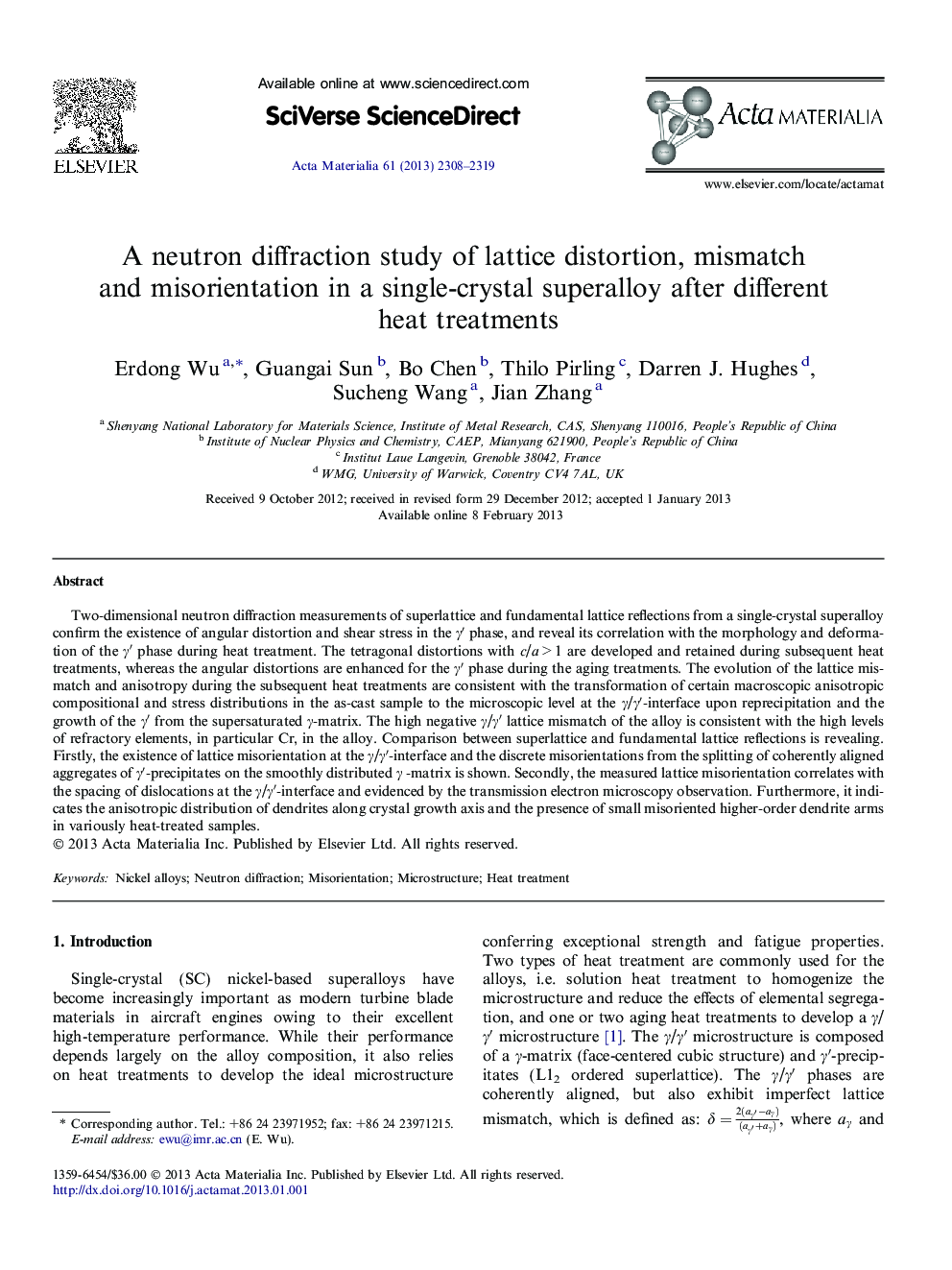| Article ID | Journal | Published Year | Pages | File Type |
|---|---|---|---|---|
| 10620180 | Acta Materialia | 2013 | 12 Pages |
Abstract
Two-dimensional neutron diffraction measurements of superlattice and fundamental lattice reflections from a single-crystal superalloy confirm the existence of angular distortion and shear stress in the γⲠphase, and reveal its correlation with the morphology and deformation of the γⲠphase during heat treatment. The tetragonal distortions with c/a > 1 are developed and retained during subsequent heat treatments, whereas the angular distortions are enhanced for the γⲠphase during the aging treatments. The evolution of the lattice mismatch and anisotropy during the subsequent heat treatments are consistent with the transformation of certain macroscopic anisotropic compositional and stress distributions in the as-cast sample to the microscopic level at the γ/γâ²-interface upon reprecipitation and the growth of the γⲠfrom the supersaturated γ-matrix. The high negative γ/γⲠlattice mismatch of the alloy is consistent with the high levels of refractory elements, in particular Cr, in the alloy. Comparison between superlattice and fundamental lattice reflections is revealing. Firstly, the existence of lattice misorientation at the γ/γâ²-interface and the discrete misorientations from the splitting of coherently aligned aggregates of γâ²-precipitates on the smoothly distributed γ -matrix is shown. Secondly, the measured lattice misorientation correlates with the spacing of dislocations at the γ/γâ²-interface and evidenced by the transmission electron microscopy observation. Furthermore, it indicates the anisotropic distribution of dendrites along crystal growth axis and the presence of small misoriented higher-order dendrite arms in variously heat-treated samples.
Related Topics
Physical Sciences and Engineering
Materials Science
Ceramics and Composites
Authors
Erdong Wu, Guangai Sun, Bo Chen, Thilo Pirling, Darren J. Hughes, Sucheng Wang, Jian Zhang,
